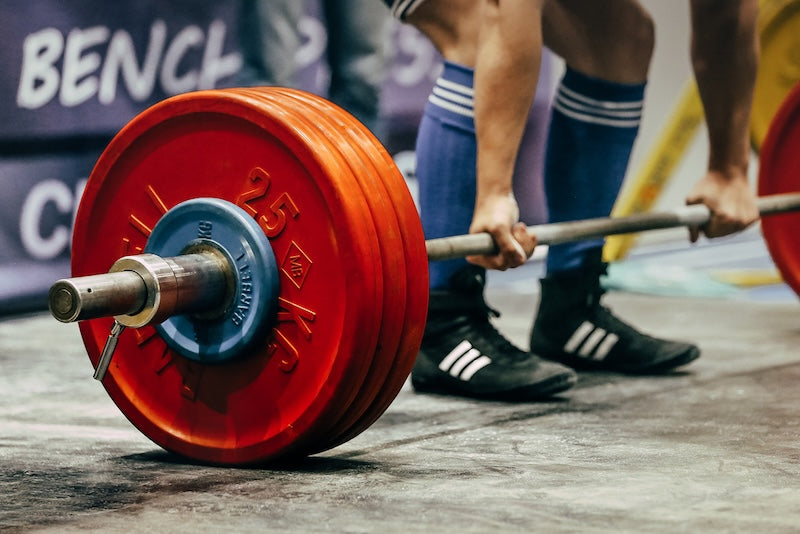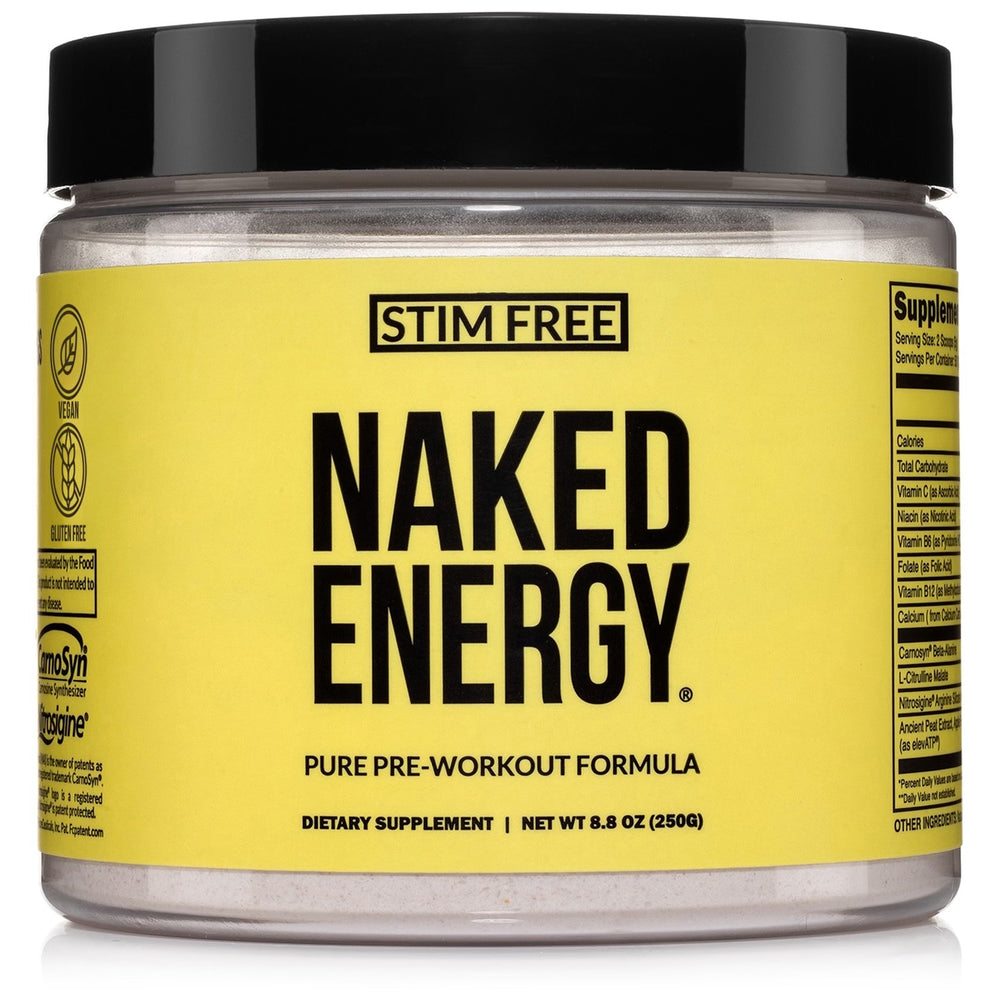Are your resistance training workouts doomed to fail if you can’t (or don’t want to) deadlift?
Not at all.
While the deadlift is a cornerstone lift for strength and hypertrophy, it’s not essential for everyone, all the time.
Whether you're nursing an injury, working around equipment limitations, or looking for something fresh, there are effective alternatives that replicate the benefits of the traditional deadlift.
What matters is training the movement pattern, and stimulating the posterior chain with intention and intelligent loading. And you can do this with a number of simple, efficient deadlift alternatives.
The 10 Best Deadlift Alternatives
Here’s a breakdown of the best deadlift alternatives, targeting similar muscle groups with comparable movement patterns to the regular deadlift:
1. Trap Bar Deadlifts
The trap bar deadlift uses a hex-shaped bar that you step inside, allowing for a more upright posture and a neutral grip. This puts less strain on your lower back and makes the lift easier to learn, especially for beginners.
Unlike the standard deadlift, which focuses more on your hamstrings and lower back, the trap bar version also works your quads because of the added knee bend.
This lift is especially useful for people with back issues, taller lifters, or anyone looking for a safer way to build strength and power.
How to Do It
-
Step inside the trap bar with feet hip-width apart.
-
Grip the neutral handles firmly with both hands.
-
Keep your chest up, back flat, and core braced.
-
Drive up, extending hips and knees together.
-
Stand tall at the top without leaning back; squeeze your glutes.
-
Lower the bar under control by hinging at the hips and bending the knees.
2. Romanian Deadlifts (RDLs)
The Romanian Deadlift, or RDL, is one of the best ways to strengthen your hamstrings and glutes.
Unlike the regular deadlift, you don’t start the RDL from the floor. Instead, you begin standing and lower the weight by pushing your hips back with only a slight bend in your knees.
This movement is a pure hip hinge; it teaches you to load your posterior chain without relying much on your quads. It’s easier on the lower back and great for building hamstring strength, muscle control, and flexibility.
Because the range of motion is shorter and the weights are often lighter than in a conventional deadlift, RDLs are easier to recover from and excellent for higher-rep hypertrophy work.
How to Do It
-
Start standing with feet hip-width apart, holding a barbell or dumbbells in front of your thighs.
-
Keep a slight bend in your knees and brace your core.
-
Push your hips back as you lower the weight down your legs.
-
Lower until you feel a strong stretch in your hamstrings (don’t let your back round).
-
Drive your hips forward to return to standing.
3. Barbell Hip Thrusts
The barbell hip thrust is one of the best exercises for building strong, powerful glutes. It’s done by resting your upper back on a bench, placing a barbell across your hips, and driving through your heels to lift your hips off the ground.
What makes the hip thrust stand out is its ability to target the glutes directly without placing much stress on the lower back or spine.
Unlike the deadlift, which loads the spine vertically, the hip thrust loads the hips horizontally, which makes it more joint-friendly and easier to recover from.
How to Do It
-
Sit on the floor with your upper back resting against a bench.
-
Roll a loaded barbell over your hips and plant your feet flat on the floor, shoulder-width apart.
-
Brace your core and drive through your heels to lift your hips.
-
At the top, your hips should be fully extended, your body in a straight line from shoulders to knees.
-
Squeeze your glutes hard, then lower the bar with control.
4. Good Mornings
Good mornings are a classic posterior chain exercise that build strength in your hamstrings, glutes, and lower back. The movement looks a bit like a Romanian deadlift, but instead of holding a bar in your hands, you rest it across your upper back (similar to a squat).
This change in load placement increases the demand on your spinal erectors and core, making good mornings a powerful tool for strengthening the muscles that support your posture and protect your back.
Because the bar sits higher, it also shifts the center of gravity slightly, requiring more control and balance.
Good mornings require solid form and a strong brace to avoid injury. But when performed correctly, they’re one of the best lifts for reinforcing the hip hinge and bulletproofing your posterior chain.
How to Do It
-
Set a barbell across your upper traps and stand with feet shoulder-width apart.
-
Keep a slight bend in your knees and brace your core tightly.
-
Push your hips back while keeping your spine straight and chest up.
-
Lower your torso until it’s nearly parallel to the floor, or until you feel a stretch in your hamstrings.
-
Drive your hips forward to return to standing, squeezing your glutes at the top.
5. Kettlebell Swings
Kettlebell swings are a fast, powerful way to train your hips, glutes, hamstrings, and core. Unlike slower strength lifts, swings focus on explosive hip extension, making them great for developing athletic power and endurance.
The key difference from deadlifts is the dynamic nature of the movement. You’re not just lifting a weight – you’re generating force and letting momentum carry it, which builds posterior chain strength while improving conditioning and burning more calories.
How to Do It
-
Stand with feet shoulder-width apart and a kettlebell on the floor in front of you.
-
Hinge at the hips, grab the handle, and hike the kettlebell back between your legs.
-
Drive your hips forward to swing the kettlebell up to chest height.
-
Let the bell fall back naturally, then hinge and repeat.
-
Keep your arms relaxed and the power coming from your hips, not your shoulders.
6. Sumo Deadlifts
The sumo deadlift uses a wider stance and a more upright torso than the conventional version. This reduces stress on the lower back while increasing the involvement of the glutes, adductors (inner thighs), and quads.
Because your hands grip the bar inside your knees, the range of motion is shorter, which makes it easier for some people, especially those with long legs or tight hips.
The more vertical back angle also means less force on the spine, making it a smart alternative for anyone dealing with back discomfort.
How to Do It
-
Stand with feet wide and toes slightly pointed out, bar over mid-foot.
-
Grip the bar with hands inside your knees, just outside shoulder-width.
-
Drop your hips, lift your chest, and brace your core.
-
Drive through your heels and push your knees out as you lift the bar.
-
Stand tall at the top, then lower with control by hinging at the hips.
7. Cable or Band Pull-Throughs
Pull-throughs are a simple but powerful way to train the hip hinge without putting weight on your spine.
Using a cable machine or resistance band, you pull the weight between your legs by hinging at the hips, like a deadlift, but with horizontal resistance.
Because there’s no load on your back, pull-throughs are great for beginners, people with back issues, or anyone looking to improve form and muscle activation in the posterior chain.
How to Do It
-
Attach a rope or band to a low anchor behind you.
-
Face away, grab the handles, and step forward until there’s tension.
-
Stand tall, then hinge at the hips, letting your hands move between your legs.
-
Keep your back flat and knees slightly bent.
-
Drive your hips forward to return to standing, squeezing your glutes at the top.
8. Single-Leg Romanian Deadlifts
The single-leg Romanian deadlift is a unilateral exercise that trains your hamstrings, glutes, and core, one leg at a time.
It follows the same hip hinge pattern as the standard RDL, but adds a balance and stability challenge that activates smaller stabilizing muscles.
By working one leg at a time, SL RDLs help correct imbalances, improve coordination, and enhance hip control, all of which support performance in typical lifts and daily movement.
They also reduce spinal loading, making them a joint-friendly way to train the posterior chain.
How to Do It
-
Stand tall holding a dumbbell or kettlebell in one hand (or both).
-
Shift your weight onto one leg and hinge forward at the hips.
-
Let your back leg extend straight behind you as your torso lowers.
-
Keep your spine neutral and hips square to the floor.
-
Lower until you feel a stretch in your hamstrings, then drive back up.
-
Repeat all reps on one leg before switching sides.
9. Glute-Ham Raises
The glute-ham raise is a powerful bodyweight exercise that targets the hamstrings, glutes, and spinal erectors.
Unlike most machines, the glute-ham raise requires you to control your body through a large range of motion, which builds serious strength and resilience, especially in the eccentric (lowering) phase.
This makes it an excellent tool for reducing injury risk, particularly hamstring strains.
How to Do It
-
Secure your feet under a glute-ham raise machine or similar setup.
-
Start in a tall kneeling position with your torso upright and core braced.
-
Slowly lower your torso forward, keeping your hips extended.
-
Go as low as you can with control, then use your hamstrings to pull yourself back up.
-
Keep your glutes and abs engaged to avoid hyperextending your spine.
10. Back Extensions (a.k.a. Hyperextensions)
Back extensions (also known as hyperextensions) are a simple but highly effective way to strengthen the lower back, glutes, and hamstrings.
They’re typically performed on a 45-degree or horizontal Roman chair, using just your bodyweight or added resistance.
Unlike the deadlift, which places compressive load through the spine, back extensions allow you to control the resistance more precisely and emphasize the eccentric (lowering) portion of the movement.
They’re great for improving spinal endurance, reinforcing hinge mechanics, and helping prevent low back pain.
How to Do It
-
Position yourself on a back extension bench with your hips just above the pad.
-
Cross your arms or hold a plate across your chest.
-
Hinge at the hips to lower your torso toward the floor with control.
-
Stop when your back is in a straight line with your legs or slightly below.
-
Reverse the motion by squeezing your glutes and extending your hips to return to start.
-
Avoid overextending at the top (stay neutral and controlled).
Choosing the Right Deadlift Substitute
The best substitute for the traditional deadlift depends on why you’re looking for an alternative.
If your reason for avoiding deadlifts is injury or recovery-oriented, prioritize exercises like pull-throughs, RDLs, or hip thrusts.
If it’s about variety or specificity (e.g., more glutes, less back), then rotate through movements like the cable pull-through and hip thrust.
For strength and hypertrophy, barbell alternatives like the trap bar deadlift or good mornings will maintain high loading while reducing risk when executed properly.
Final Thoughts
In a perfect world, deadlift will be part of your routine.
But if not (whether you’re recovering from an injury, lack the proper equipment, or are just getting bored of the same old exercises), all of the alternatives above are perfectly viable.
Choose the tools that fit your body, your goals, and your training environment. The results will follow.




